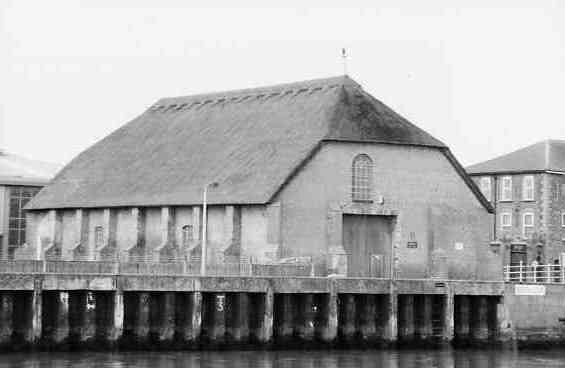Fishing Menu
- Introduction
- Why Yarmouth?
- Drift Net Fishing
- The Share System
- Life on Board
- Other Players
- Prunier Herring Trophy
- Front Page
- Lifeboat Shed Restoration
- Gorleston-on-Sea
Heritage Group - The Romans
- The 19th Century
- The Middle Ages
- The World Wars
- Shipwrecks
- Local Characters
- Local Interest Groups
- Local Transport
- Here & Now
- This & That
- GYBC & GYPA
The Other Players
Hewetts Short Blue Fleet was originally run from Barking in London. As the herring trade grew in Gorleston it made sense for the whole operation to be transferred from Barking. This was speeded up by the establishing of rail links to London in the mid 19th century. This move led to a boom in local industries and the creation of many new enterprises to service the fishing fleet. Dry Docks, various engineering works, fish curers, ice houses, shipwrights, sailmakers, carpenters, blacksmiths, painters were just a few of the trades which sprang up or expanded during this time. Mr Harvey George, who was a Hewetts manager, established the Gorleston Hospital for the benefits of the crews of the boats.

This house, situated on Gorleston High Street overlooks the river and would have been owned by a fleet manager or owner. From this high vantage point they would have tracked the comings and goings of the fleet.
By the 1880's Hewetts employed over 2,000 men and had a fleet of 170 trawlers. All good things come to an end and by the start of the 20th century the Short Blue Fleet was in trouble. This was brought about by the introduction of steam trawlers which, although a necessity to remain competitive, were considerably more expensive to purchase and this, during a period of low fish prices. An explosion at the company's engineering works, which were not fully insured did not help the situation. Then in 1901 the inconceivable happened, Hewetts went out of business and the 4000 people who relied on the company for work and housing suddenly faced a very uncertain future.
Scottish fisher girls came to Gorleston every year in their droves to carry out their trade, gutting and packing herring. They worked in the open, in all weathers for very little pay. These "girls" would arrive by train to be transported to the lodging houses in Gorleston. As the herring, followed by these "girls" arrived in the autumn after the main holiday season, landladies were no doubt pleased to see them arrive.
During the winter, ice was taken from the frozen broads and rivers and brought to the icehouses situated in Great Yarmouth and Gorleston to be stored until the summer months when it was used to help keep fish fresh during the journey to market. The picture shows the restored icehouse which is adjacent to the Haven Bridge, Great Yarmouth. The Gorleston icehouse was located, believe it or not, in Icehouse Lane, Gorleston.

In 1980, this 19th century Ice House was restored by J and H Bunn. The thatch, which is still good, was laid by Derek Roll.

Brush Quay, Gorleston must have seemed very welcoming to any fisherman returning home after riding out a North Sea gale. Reaching the calm waters of the River Yare with its familiar sights, sounds, safety and home might well have been accompanied by a silent prayer.


